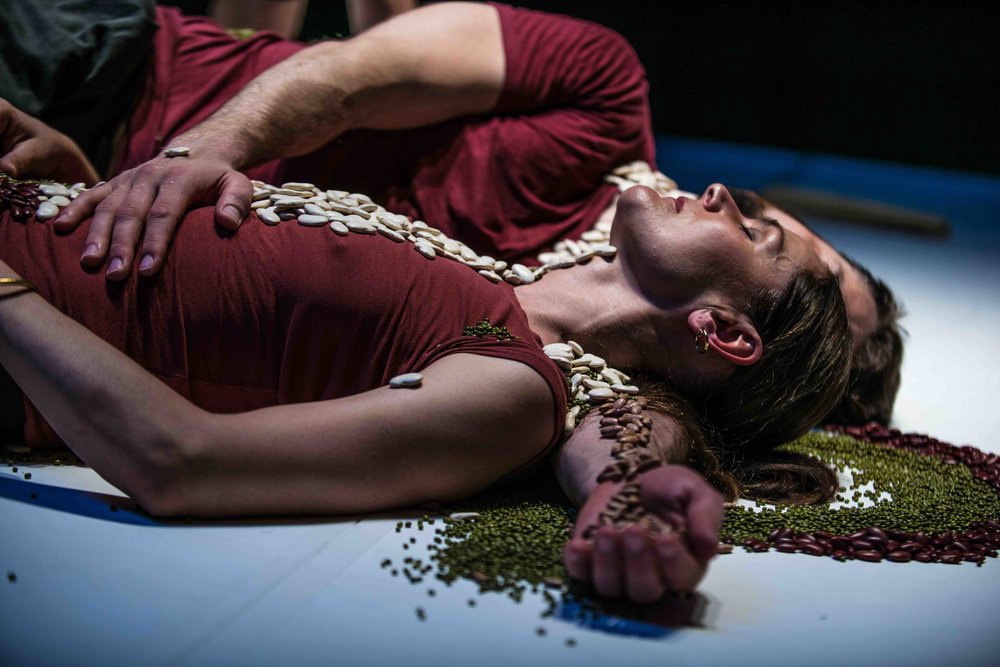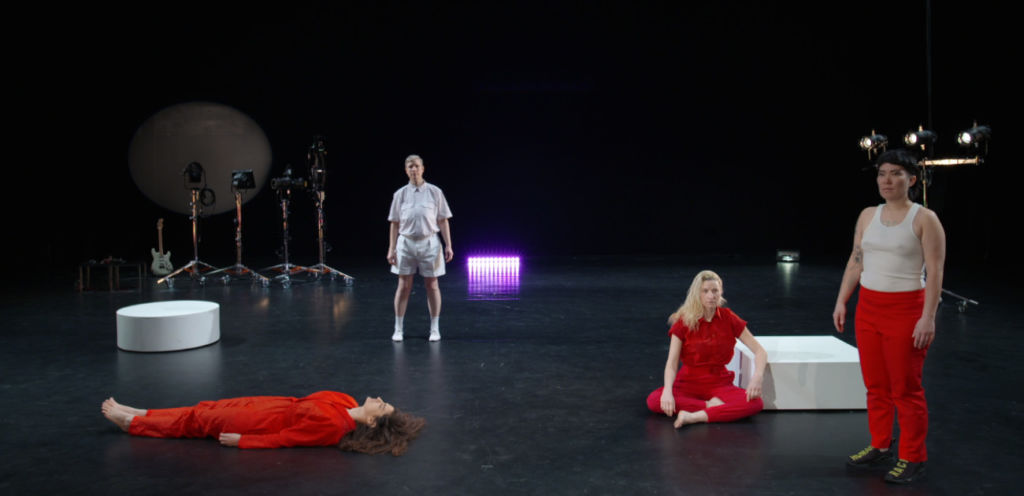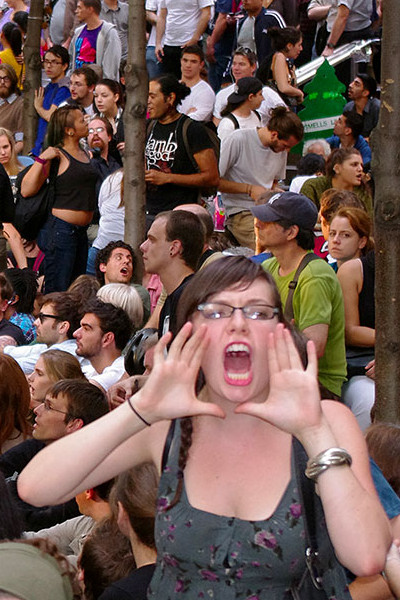The association of several countries, foundations and companies to create a seed bank, The Svalbard Global Seed Vault, also dubbed the “Noah’s Ark” of plant diversity, inspired Norwegian choreographer Ina Christel Johannessen to create Frozen Songs. A tormented piece about what may possibly be the most crucial topic of our time: the survival of our species.
Appalled by the dramatic changes in climate – particularly in arctic regions – and the erosion of biodiversity, Ina Christel Johannessen undertook a journey to the Svalbard archipelago, located in the middle of the Arctic ocean, where 867 081 species of plant seed from over 232 countries are stockpiled in the cold, dark depths of the world seed bank. Steeped in these threatening landscapes and futurist cold chambers, the artist, a major figure in contemporary Scandinavian choreography, conceived Frozen Songs.
The curtain opens on a dancer trapped within a wall of plastic bags. Bodies twist and turn, struggling with the matter, agonizing in a blue semi-darkness that evokes the apocalypse, or an underwater encounter between a fish and the seventh continent (term given to the plastic, continent-sized mass gathering on the Pacific Ocean surface). In the first part of the performance, the dancers seems to be in combat, driven by an acute instinct to survive and the hostile environment in which they must evolve. The set combines elements from several artists: a plastic wall by Kristin Torp, a mobile wall that moves across the stage like a black tide, as well as video projections by Chinese artists Fend Jiangzhou and Zhang Lin. In this dystopic universe, seven international dancers from the Zero Visibility Corp company founded by the choreographer in the mid-1980s, embody the future disruptions caused by climate imbalance.
One after the other, the visual backdrops illustrate a stereotype of life in extinction: a sky of black clouds with lightning flashes, smokestacks releasing toxic smoke, a crossbeam in a crumbling factory, until a deluge of seeds begins to rain onto the stage, harbingers of hope. Little by little, the bodies begin to move again. The dancers grab crates that resemble the ones stored in The Seed Vault, numbered and stamped with the flag from the country of origin, and dump out seeds, spreading them so they swarm the stage. This action, which makes one wonder whether it is an homage to the seed bank or an attempt to free the seeds from their vault, is like a negative echo to the Sacre du printemps as choreographed by German dancer and choreographer Pina Bausch, in which the wintery ground of barren soil demands the sacrifice of a young woman as an offering to the Gods of spring. Here we see the opposite, a frenzy rising out of seed exaltation, growing stronger until it culminates in a giant video projection of germinating seeds, plants budding all over the bodies until the stage is covered in vegetation.
Yet the performance, with its melodramatic directing, remains superficial, satisfied to celebrate the miracle of nature with a dance of hope. Implicitly, and perhaps unwittingly, it alerts us to our dwindling seed diversity without explaining why: forced monoculture and an invasion of sterile seeds sold by major seed companies (Monsanto, DuPont, Syngenta, Limagrain). The fight on stage is reminiscent of what farmers, scientists and activists have undergone to prevent the privatization of seeds, as retraced in detail in the documentary The Seed War by Stenka Quillet and Clément Montfort. The film shows the growing resistance spearheaded by Vandana Shiva (Indian scientist, environmental activist, feminist, alternative globalist and philosopher) and the Kokopelli organization that freely distributes un-copyrighted and reproducible seeds. Both use civil disobedience to fight laws aimed at controlling the use of farm seeds. What was considered a shared good just one century ago has now transformed into a private good for industrial use, registered as property so it can be certified and sold. These laws implicitly protect corporations, who multiply their property rights in order to enforce their sovereignty in the industry. The documentary also reminds us of the real intention behind The Seed Vault: many donors are actually seed corporations. It so happens that gathering all the planet’s seeds in one single location makes it easier to carry out genetic sequencing tests and produce new varieties to patent, rather than re-sowing them one day.
Translation by Maya Dalinsky
Couverture : Frozen Songs at Attic Theatre in Tromso, Norway, 2017 © Antero Hein

![November 14, 2017 / Cedar Ave]](https://www.switchonpaper.com/wp-content/uploads/2020/08/Cedar-Ave-rectang-e1597313025558-1024x751.jpg)








